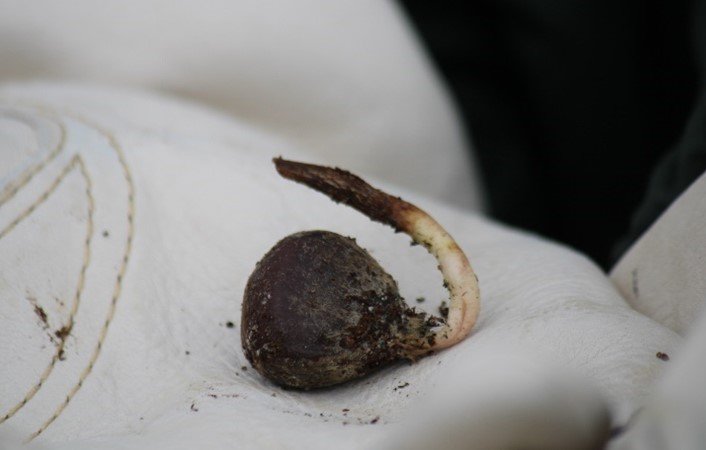By Kacey Shiflett
Serving with the WV Division of Forestry
The West Virginia Division of Forestry (WVDOF) is committed to protecting, nurturing, sustaining, and promoting the wise utilization of our state’s forest resources.
Red Spruce planting group
The WVDOF has managed the Red Spruce Restoration project at Kumbrabow State Forest for the past three years. Local 4-H students have been helping them plant roughly 1,000 red spruce saplings each May. This project is part of the Central Appalachian Spruce Restoration Initiative (CASRI). The U.S. Forest Service, The Nature Conservancy, and AFNHA have also been active partners throughout the process.
4-H students planting a red spruce
Before the late 1800s, West Virginia’s forests consisted of about 1 million acres of red spruce, unfortunately only about 10 percent of that forest remains in the state today. In the late 1800s and early 1900s, an extensive amount of commercial logging began in the state and decimated the red spruce forests. Red spruce now covers about 178,000 acres at high elevations in the Allegheny Mountains and places on North Fork Mountain.
One of the benefits of restoring West Virginia’s red spruce forests is that wildlife rely on this tree to survive. Roughly 300 wildlife species that are endangered or vulnerable rely on the tree for food and shelter; including the Cheat Mountain salamander, Saw-whet owl, and West Virginia Northern Flying Squirrel. The red spruce tree's shade keeps the soil moist and stream temperatures cold, which is important for native fish species such as Brook Trout.
Red Spruce sapling
For the most part, the red spruce saplings that have been planted in previous years seem to be growing at a normal rate, with only a few casualties. The WVDOF considers this to be a successful project. The whole purpose of this project is to get local students involved in the forest and to restore the red spruce population at Kumbrabow State Forest. Conservation and Education go hand in hand. Click this link to watch a short clip on the WVDOF Red Spruce Restoration project at Kumbrabow https://youtu.be/8fMnFIUgv7o.
American Chestnut seed
Another ongoing project the WVDOF started is an experimental planting of American Chestnut seeds. WVDOF foresters recently planted about 100 American Chestnut seeds at each of these State Forests: Calvin Price, Seneca, and Greenbrier. These chestnut seeds were taken from American Chestnut Trees that showed resistance to the chestnut blight.
Kacey dropping chestnut seed and dirt down a tree tube
The USDA reported the chestnut blight altered the composition of forests from Maine to Georgia. Before the 1900s, chestnut trees accounted for 50% of eastern hardwood forests. The tree’s straight stem served building and carpentry trades. The edible nuts provided food for wildlife, farm stock, and people. A fungus, imported accidentally, was first noticed on chestnut trees in New York in 1904. By 1925, the chestnut blight had killed the American chestnuts over a 1,000-mile range. The trees usually get the blight by the time they are 6 inches in diameter, and they die out. The blight continues to kill American chestnut trees today. Losing the American chestnut tree was hard for Appalachian ecosystems and economies.
The purpose of this experimental planting is to hopefully re-establish American Chestnut populations in West Virginia’s state forests. This experiment will be ongoing to observe the success/survival of these American Chestnuts.
Chestnut planting group







